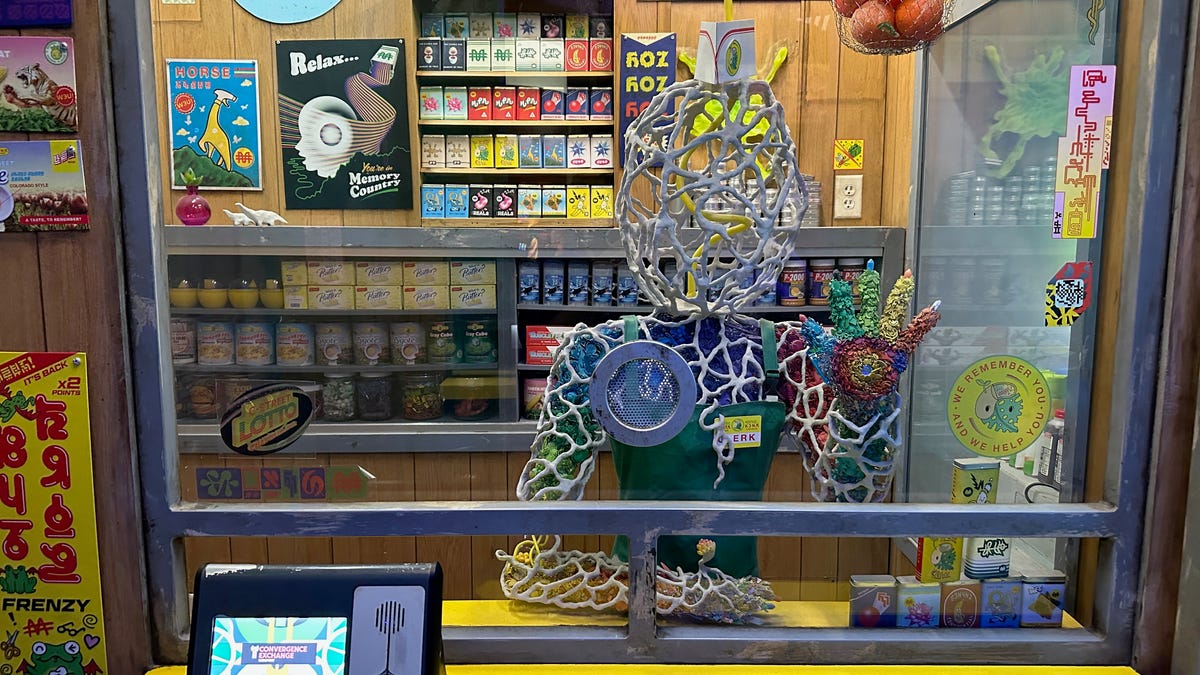We entered through the gift shop. The convenience-store glare of Omega Mart greeted us like a 7-Eleven: bright rows of generic snack foods, souvenir knickknacks and a beverage case in the back. Standard Vegas vibe. But look closer. The display case near you advertises "Emergency Clams." A pile of soup cans, attended to by an employee, is turning into an animated robot. The deli counter has a head made of meat and other items that look alien. Someone just opened the door to the refrigerator and disappeared into a glowing tunnel.
Maybe you've already been to, or heard of, Meow Wolf's Omega Mart experience in Las Vegas. It's buried inside a larger entertainment complex called AREA15 that's also adding a 20-acre Universal Studios horror experience in the next few years. It's my first visit there since I toured the complex in a hard hat in 2020. (I also got a virtual tour in 2021.) Now, I was entering Omega's Mart's deeper, cavernous spaces for real, getting lost in an impossible labyrinth of art rooms and artifacts and interactive mysteries spread across thousands of square feet. The deeper I wandered, the more I felt welcomed by magic.
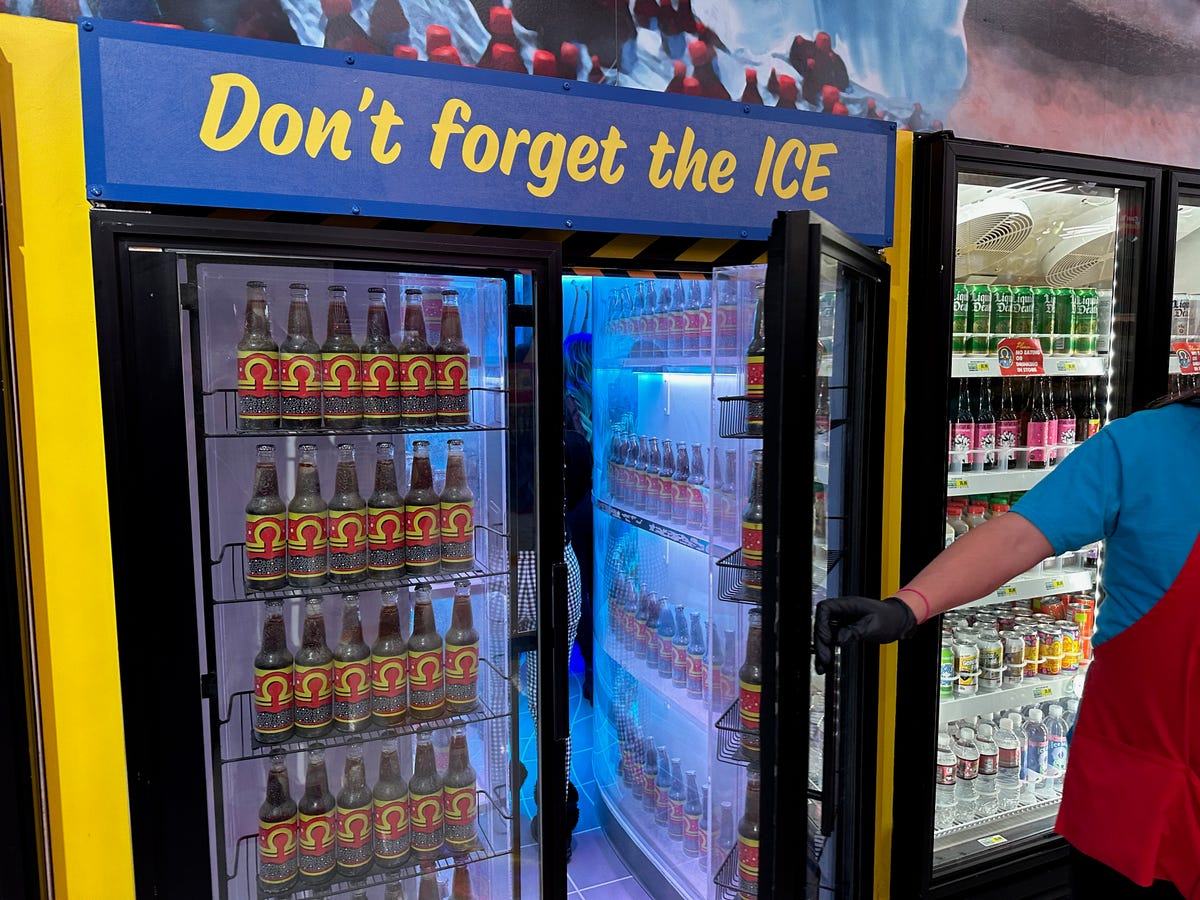
Meow Wolf Omega Mart's otherworldly convenience store location in Las Vegas. That refrigerator leads to many things.
Scott Stein/CNETAnd in that tangled magic, connection points: I tap little kiosks with an access card that unlocks secrets. Occasionally, I find phones that ring, and I answer them. Or, I pick them up and call other people. I see employees who are actors, characters in this world, and they guide me, sometimes, when I ask. I see special hidden puzzles that others help me solve.
This infinite-seeming, interactive, communal art space felt like a physical version of the metaverse that VR and AR companies like Meta are still only dreaming of.
In 2016, a year defined by new VR headsets and strange new AR games like Pokemon Go, I was hypnotized by immersive theater. Not just shows like Punchdrunk's Sleep No More, but more intimate events like Third Rail Projects' Then She Fell. I found these real-life experiences, often ones without any major tech, to be poetic models for the dream-immersive worlds I hoped VR and AR could someday become.
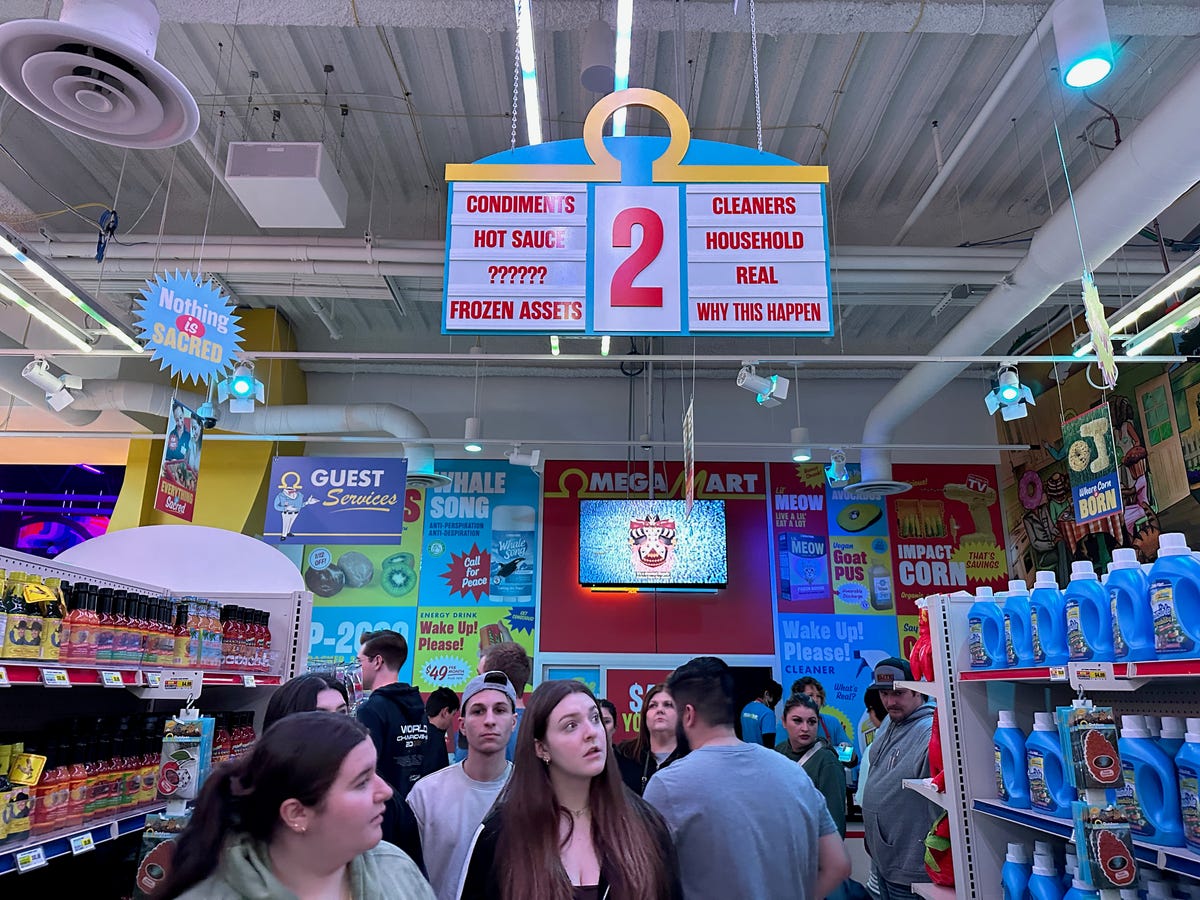
Look closer at those products. They're not what they appear to be at Omega Mart in Las Vegas.
Scott Stein/CNETI say this because my first time in a Meow Wolf space brought those same feelings back all over again. A week later, I double-dipped when I flew out to Denver to try Meow Wolf's latest location, Convergence Station.
Meow Wolf is an art collective and entertainment company, an immersive-experience hybrid. After spending a few weeks reflecting on it all, what fascinates me about Meow Wolf isn't actually the immersiveness, or the weirdness, or the scale, though those are all incredible. It's how the army of local artists who make these individual worlds somehow come together to blend one experience from hundreds of individual efforts. It's a mix of freedom and connection, and interaction. That's what the metaverse is looking for -- letting individual creators in while building a framework for everyone to play, and have it all work.
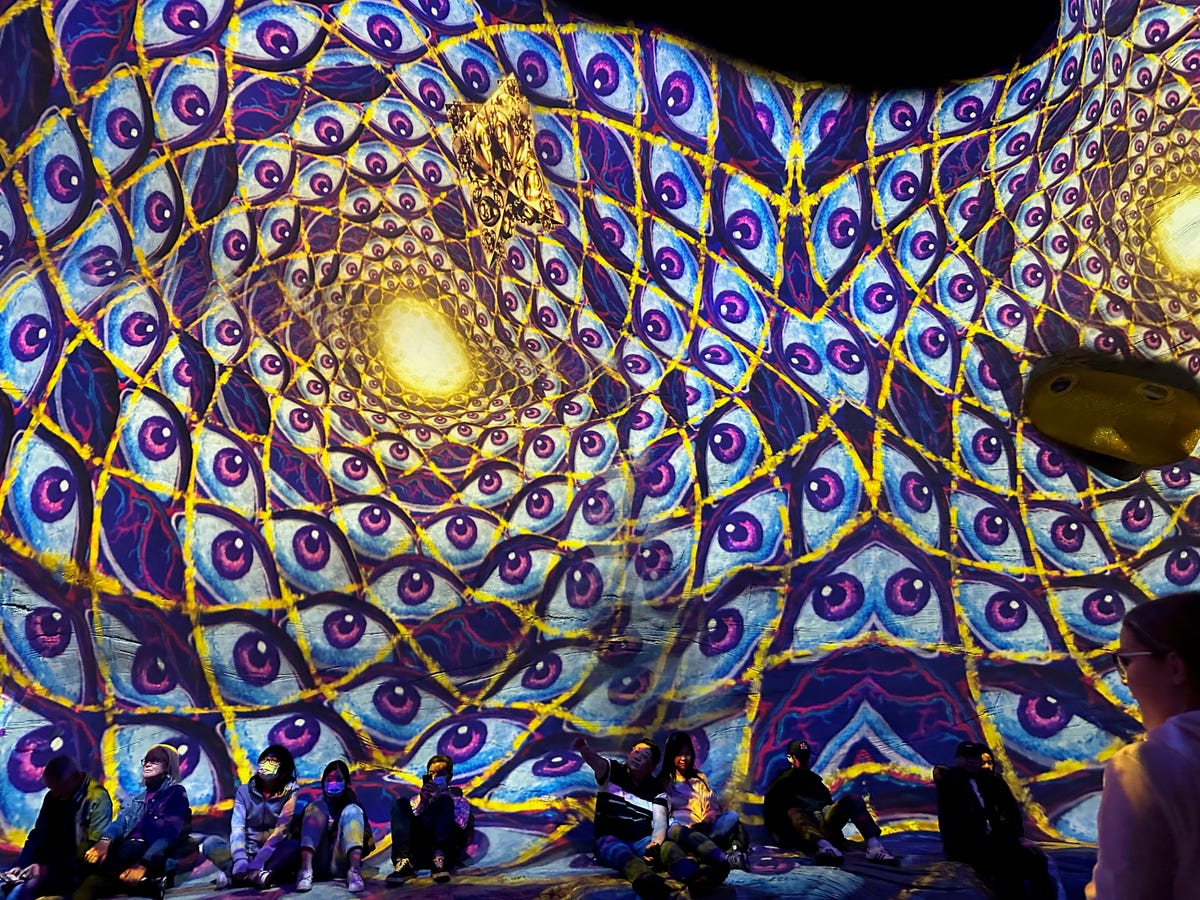
Massive projection mapping covers many walls in hypnotic animations. Energy and mood can shift from room to room in the Omega Mart.
Scott Stein/CNETMultiverse of meltness
Meow Wolf's various locations are all enormous immersive universes, a cross between phone-friendly "Instagram" museums and Disney World. It's a Twilight Zone theme park, a bundle of mysteries in overstimulated, dripping-with-detail sparkle and glow. I got familiar echoes of many of my favorite experiences of the last decade. Like the ongoing Sleep No More in New York, I could explore artifacts in drawers and on bookshelves, browsing details and moving through the world like a ghost. The mischievous art reminded me of Banksy's occasional installations. In Los Angeles, my favorite dusty museum of mysteries, The Museum of Jurassic Technology, gives me similar unanswered feelings of magic. The terminals I tap into and unlock a story through, and the attendants who help me in various rooms, are as approachable as… well, my last trip to Universal Studios, waving a wand through the Harry Potter universe.
The maximalist, multidimensional vibe even resembles recent films, including the garage-junk, sci-fi whimsy of Everything Everywhere All At Once. And a bunch of it, in spirit, reminded me of the wide-open whimsy that Magic Leap was going for leading up to its first headset launch.
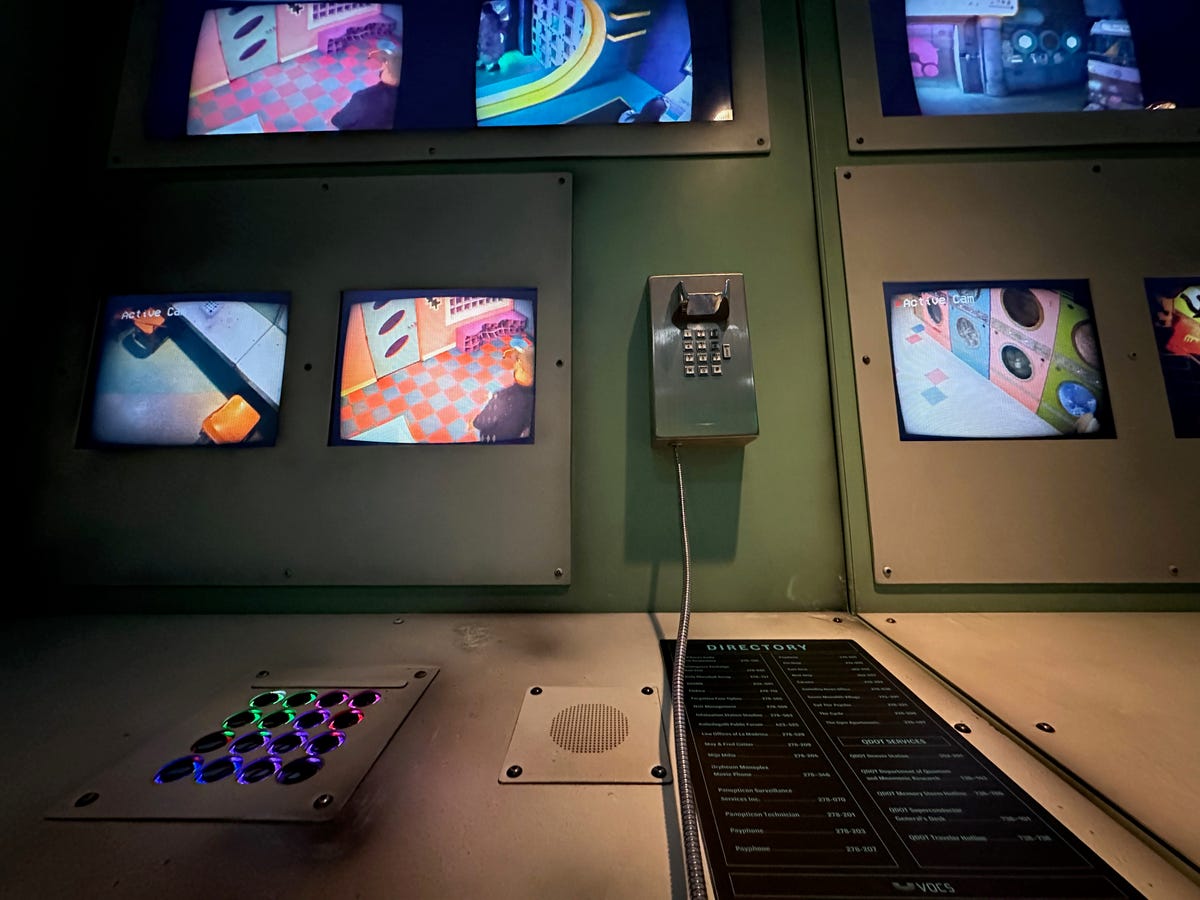
I found this magic phone terminal in Denver. It calls between worlds in the Convergence Station.
Scott Stein/CNETUnlike the Las Vegas Omega Mart, the Denver Convergence Station is set up as a transit hub to a series of alternate universes. Still, there are parallels to the Las Vegas version. Sometimes I find shared artifacts like a dusty item from Omega Mart's store. I wander into a bank of monitors and make phone calls to places throughout the installation, but I learn later that Convergence Station and Omega Mart have phones that can call each other. Both places have RFID-based cards (equipped with radio frequency identification technology) to tap into terminals, as well as assistants/actors/performers/docents who move through, adding to the story and helping you find your way if you want. The ticket prices, at about $45 to $59 depending on the location, time and date, are not far off from a museum or theme-park admission, and less than most theater tickets. The RFID cards cost a few dollars more, which, according to Meow Wolf, is a way to keep the card-tapping terminals from getting too crowded.
This template is going to expand, with Meow Wolf's next location in Dallas. All of these worlds will intertwine, and at some point, perhaps, VR and AR could factor in. Expanding beyond these fixed locations is something Meow Wolf has been exploring. The more there are, the more some type of shared-experience space seems to be blooming. Meow Wolf's hallucinatory merchandise includes lots of lore and collectible in-world souvenirs, almost like Disney's Star Wars: Galaxy's Edge shops. I bought mythology books and oracle cards (I couldn't help myself).
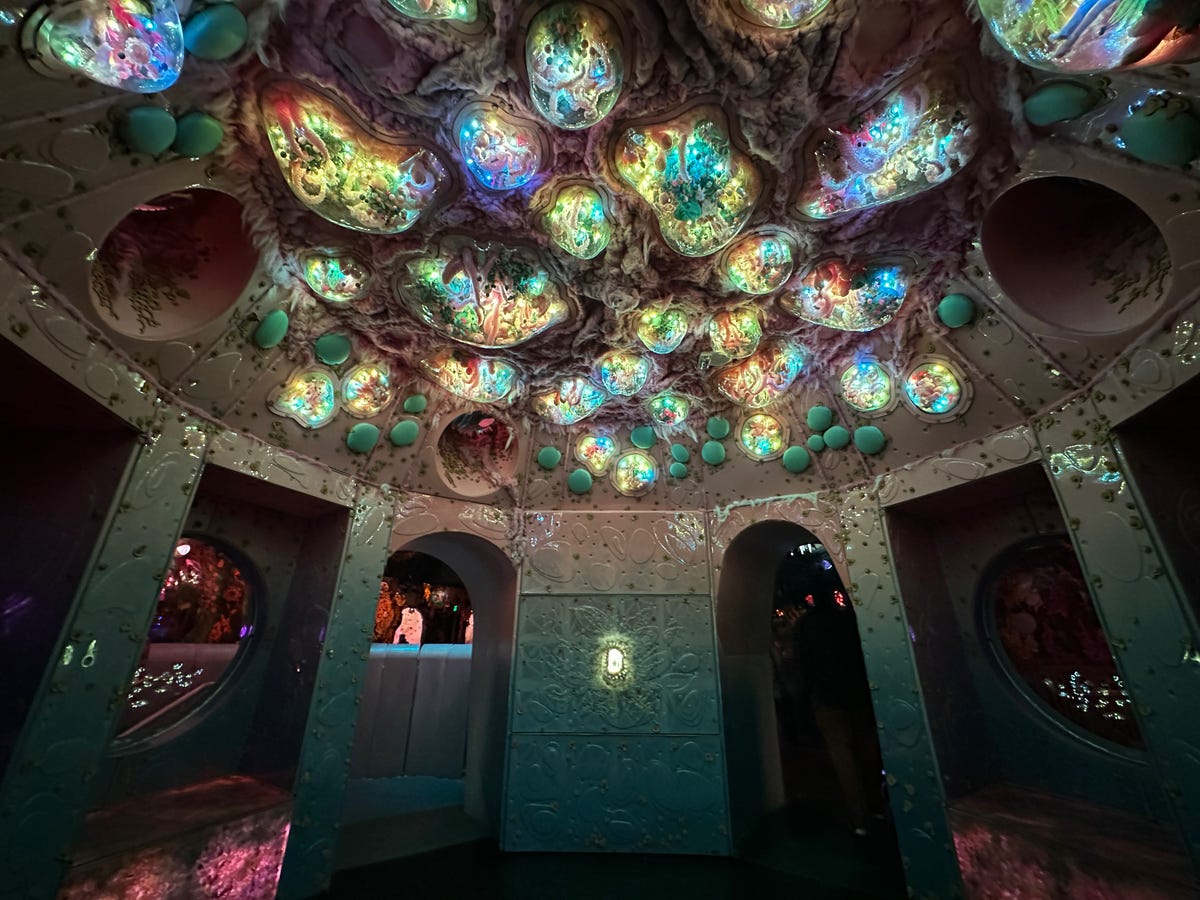
A beautiful and eerie ceiling in one of Convergence Station's worlds, Numina.
Scott Stein/CNETAn umbrella of interconnection
After 90 minutes of Meow Wolf immersion, I came away impressed, not necessarily because of the over-the-top design aspects (which are amazing), but because of how it all works together. People wandering through, some casually taking selfies, some seeking to be alone and get lost, some with families touching everything on scavenger-hunt quests. Deep-divers and surface-skimmers. Unlike a Disney experience where I see hundreds of people pointing their phones at something, my wanderings still felt private, personal, uncrowded. And unlike immersive theater or a VR experience where everything happens at a contained level or where photos can't be taken, here I could take little souvenir snaps.
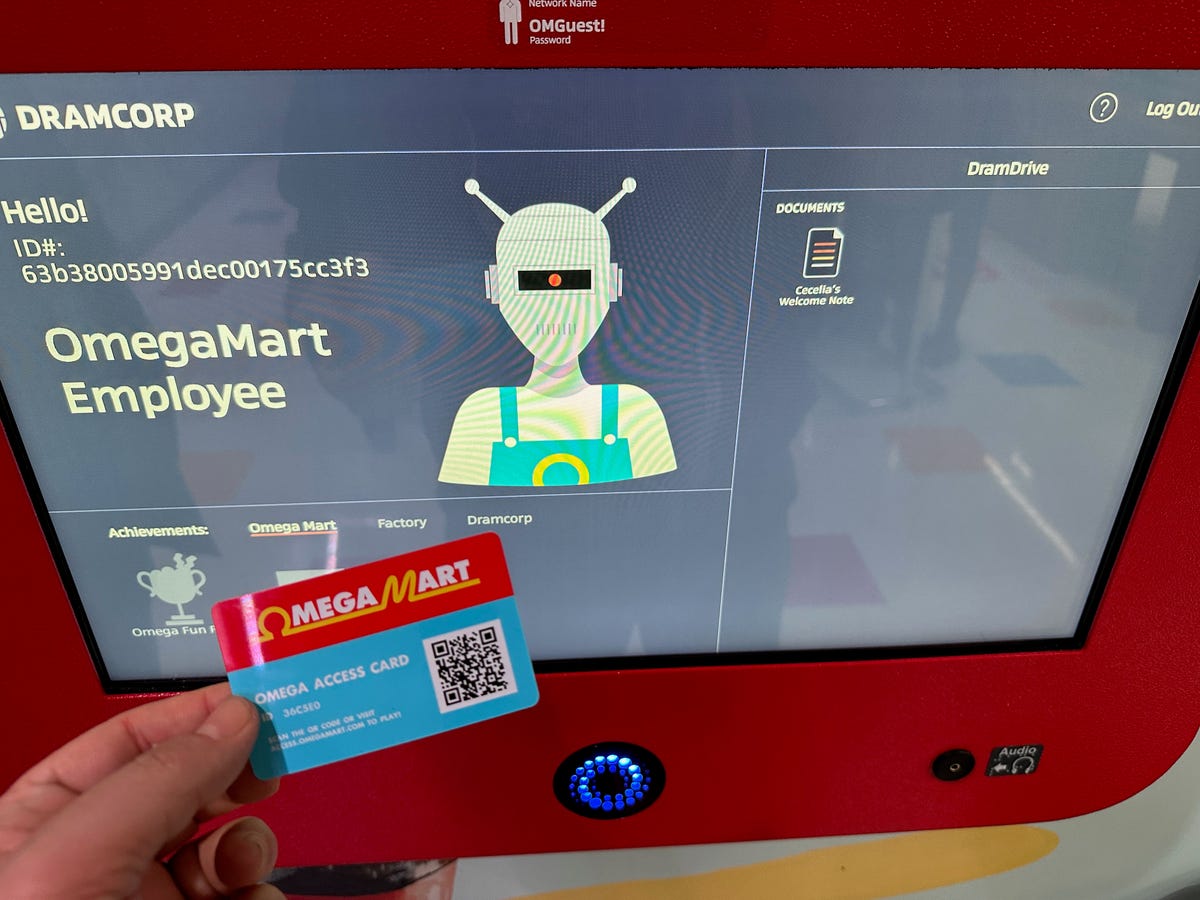
Tapping into one of Omega Mart's terminals. Little RFID cards serve as souvenirs and a sort of interactive game layer.
Scott Stein/CNETIt made me think about the promises tech has made about the metaverse. We've been told (and I've hoped) that an interconnected network of social experiences awaits us, with creative playgrounds at our fingertips. That already exists: Roblox, Fortnite, Minecraft, VR apps like VRChat. But these don't feel open to everyone, and it's not easy to blend the promise of free creativity into social comfort. A year ago, I wrote about how social metaverse platforms were trying to figure out our comfort zones. Today, it's still not solved. Having more real-life "docents," or personal guides, in social apps would help, which Meow Wolf has. Having more of a sense of discovery that links individually created worlds together would also be useful, which Meow Wolf also has (with artists that have been pre-commissioned for that purpose). I dream of having some way to record my movement between worlds, keeping a consistent log that moves with me. Meow Wolf's little RFID cards are sort of like that, too.
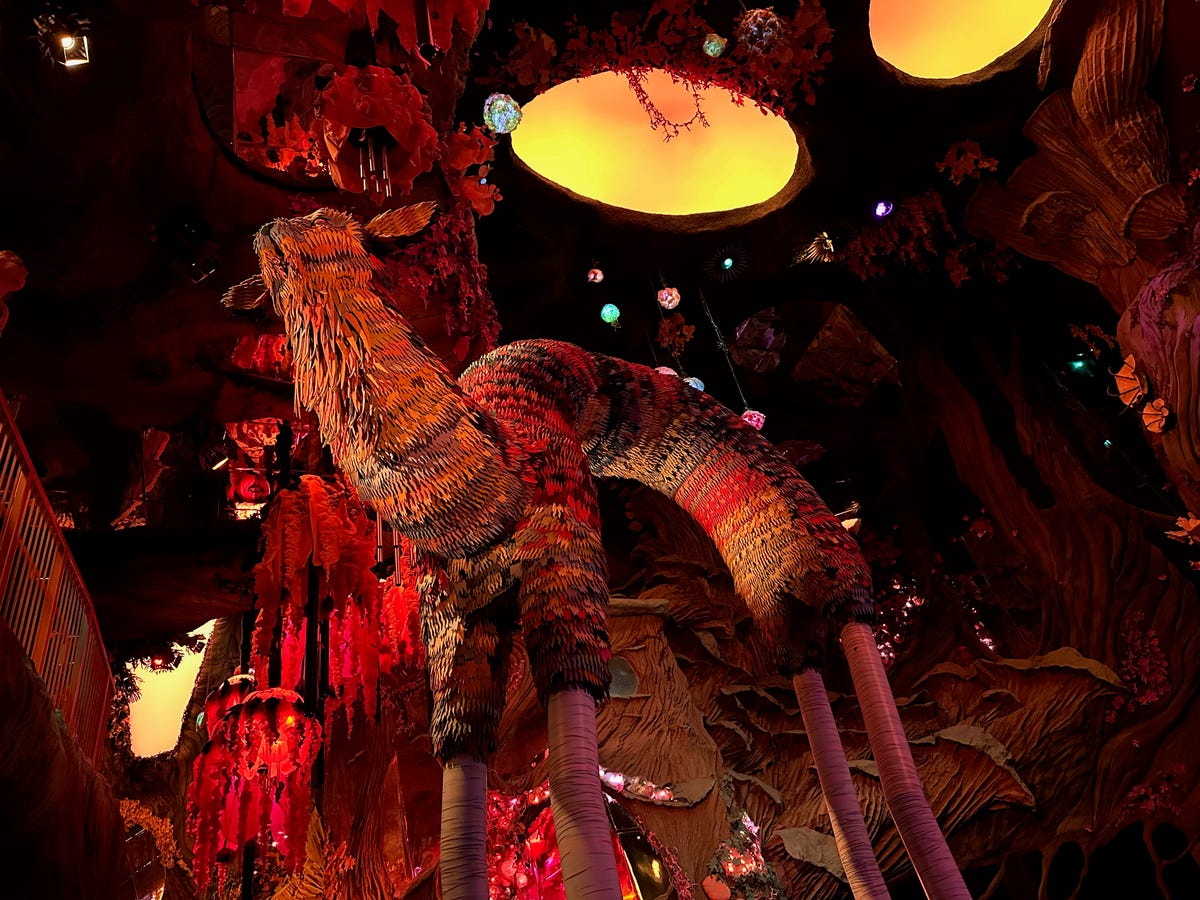
The art all around every corner feels kaleidoscopic, unique and yet intertwined in the Convergence Station.
Scott Stein/CNETModels for collaboration?
One unique part of Meow Wolf's installations is that they're made with a mix of hundreds of local and in-house artists. Projects are designed collaboratively, and individual artists are encouraged to make the spaces their own while also connecting them to everything else. Actors have the same opportunity: There are set roles, but individuals create their own characters to fit the space.
It doesn't sound like it'll work, but it does. And maybe it works well because every Meow Wolf experience seems to have chaotic energy, filled with so many stimuli that I'm ready for anything to happen at any moment.
VR worlds like Meta's Horizon Worlds are desperately seeking creators to make interesting things that people will want to visit. Such a blank slate is promising in theory, but it tends to result in a random assortment of virtual places that are hard to both discover and promote. Also, when I visit them, I don't know what I'm supposed to be doing. I feel awkward, wander around a bit and then leave.
Meow Wolf's conceptually unified structure helps you navigate the artistic landscape in a physical space, giving you the chance to appreciate individually curated art pieces. The "ID card" is a common interface that works across dozens of rooms, and each creative bit feels like it belongs under the same umbrella.
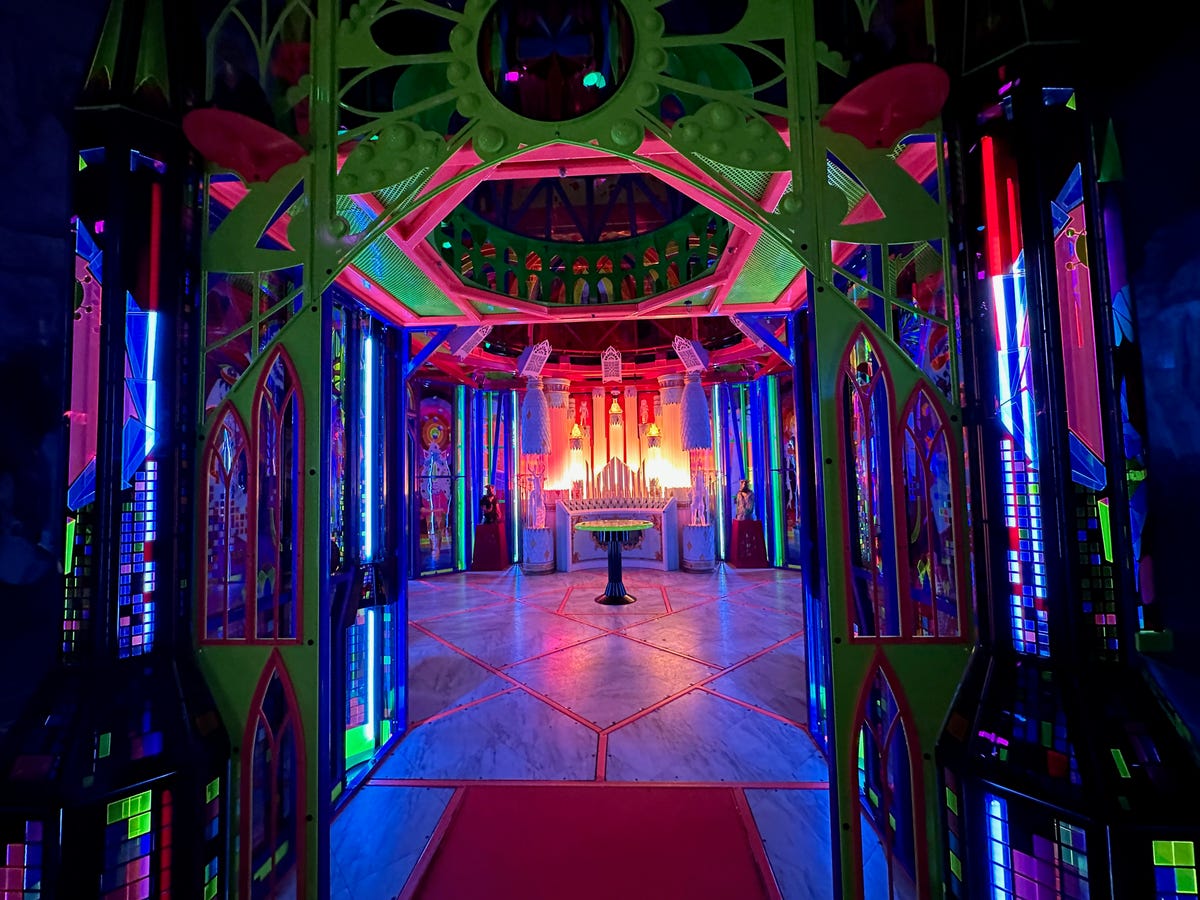
A glowing cathedral at Convergence Station holds secrets. Attendants pointed me to clues.
Scott Stein/CNETA dream model for a future dream space
While I don't think any virtual experience in an app has really brought "the metaverse" to blazing life, walking through Meow Wolf's worlds gives me that dream feeling, even if it's not technically a metaverse at all. Or maybe it is.
If Meow Wolf starts to expand into new territories -- maybe smaller, maybe virtual -- would the physical spaces overlap, dovetail, interconnect? AR companies are already trying to do this with locations in the real world, to mixed success.
Instead of being virtual-first, Meow Wolf is starting in the real world, with random bits of art, light and strange magic. It's probably more viscerally transformative than most VR I've tried lately. And it's making me wonder how this interactive experience could inspire a new generation of virtual experiences to come.

